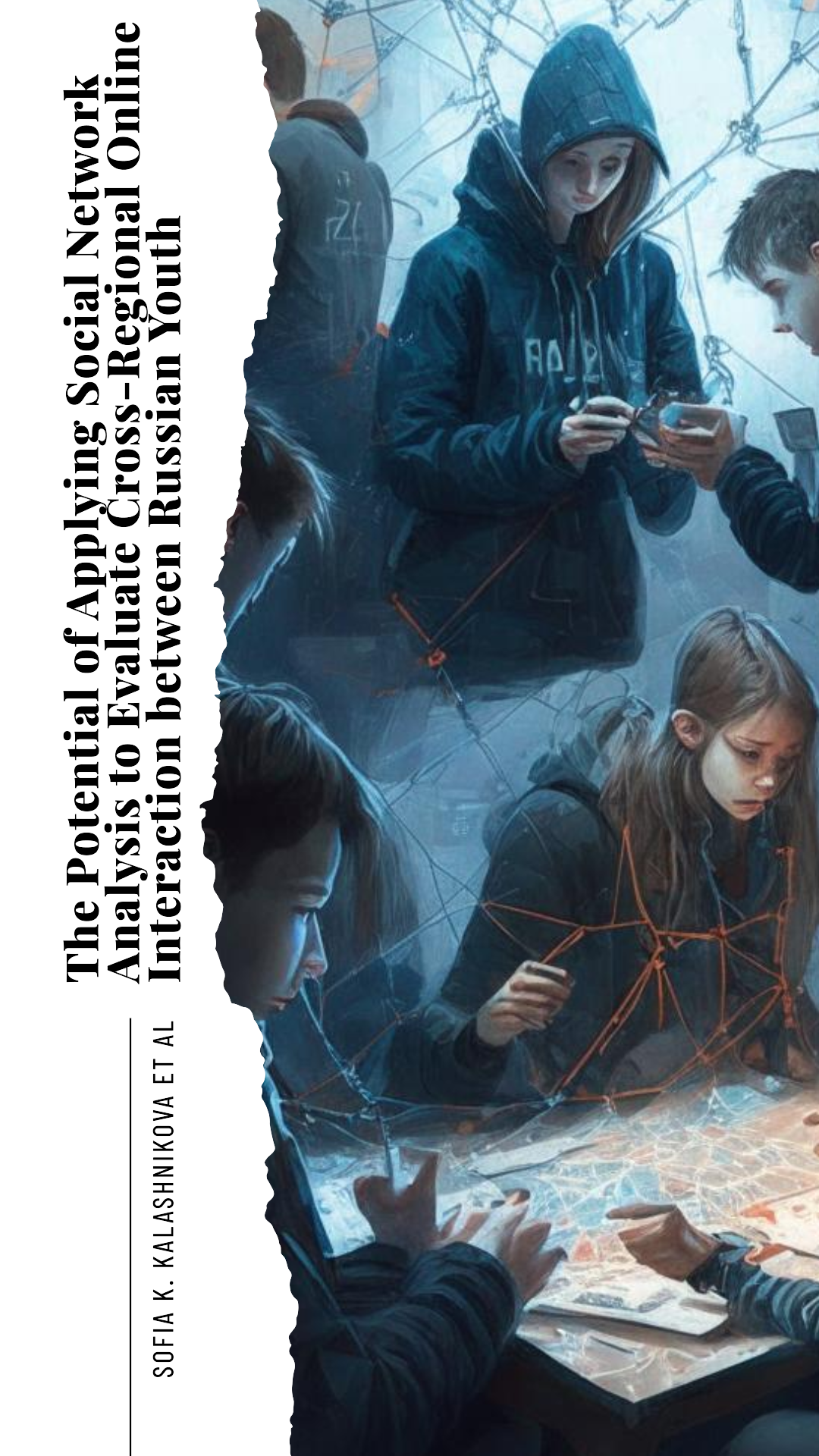Abstract
In a relatively short period of time, social networks have become a unique source of personal data, providing information about the interests, values, and environments of billions of real people. The purpose of this paper is to determine the potential of applying social network analysis techniques to assess the online interactions of Russian youth in the context of regional differences. In the empirical part of the study, we focused on the largest regional groups (284 communities) in the social network VKontakte, where users discuss socio-political topics. The sample size consisted of 4,020,268 people aged 14 to 35 across Russia. Our analysis allowed assessing the proximity of groups to each other within specific regions or federal districts. Additionally, we determined the density (connectedness) of communities for each region. As a result, we demonstrated the potential of network analysis in exploring the connections between subscribers to online communities and the nature of association among these communities across federal districts. We identified some disconnected objects from the overall network of interaction, which could be explained by regional specificities or differences in community topics.
References
Anttiroiko, A.-V. (2015). Networks in Manuel Castells’ theory of the network society. MPRA Paper. https://mpra.ub.uni-muenchen.de/65617/
Castells, M. (2000). The Information Age: Economy, Society and Culture (O. I. Shkaratan, Trans.). The HSE. (In Russian).
Fischer, M. (2013). Policy network structures, institutional context, and policy change. Paper prepared for the 1st International Conference on Public Policy (ICPP), Grenoble.
Gurin, K. E. (2016). Structuring friendship networks in online media communities. Discussion, 6, 64–71. (In Russian).
Gvozdikov, D. S. (2015). Online networks and the development of network interactions. Vestnik of St. Petersburg State University. Sociology, 2, 100–107. (In Russian).
Kadushin, C. (2012). Understanding Social Networks: Theories, Concepts, and Findings. Oxford University Press.
Kaplan, A. M., & Haenlein, M. (2010). Users of the world, unite! The challenges and opportunities of Social Media. Business Horizons, 53(1), 59–68. https://doi.org/10.1016/j.bushor.2009.09.003
Kolomeets, M., Chechulin, A., Kotenko, I., & Saenko, I. (2019). Access Control Visualization Using Triangular Matrices. 2019 27th Euromicro International Conference on Parallel, Distributed and Network-Based Processing (PDP), 348–355. https://doi.org/10.1109/EMPDP.2019.8671578
Kuchukyan, A. V. (2017). The Opportunities of Network Analysis Methodology in the Study of Virtual Youth Communities. Theory and Practice of Social Development, 4, 24–26. https://doi.org/10.24158/tipor.2017.4.4 (In Russian).
Maltseva, D. V., Moiseev, S. P., Shirokanova, A. A., & Brick, T. (2017) Network analysis of biographical interviews: opportunities and limitations. Telescope: Journal of Sociological and Marketing Research, 1, 29–36. (In Russian).
Neal, Z. P. (2022). Backbone: An R package to extract network backbones. Plos One, 17(5), e0269137. https://doi.org/10.1371/journal.pone.0269137
Olmos-Alcaraz, A. (2022). Populism and racism on social networks: An analysis of the Vox discourse on Twitter during the Ceuta ‘migrant crisis.’ Catalan Journal of Communication & Cultural Studies, 14(2), 207–223. https://doi.org/10.1386/cjcs_00069_1
Pechenkin, V. V., & Yarskaya-Smirnova, E. R. (2014). Network approaches in the analysis of social cohesion. Vestnik Saratov State Technical University, 4(1), 244–248. (In Russian).
Sethunya, J. R., Letsholo, K., & Hlomani, H. (2016). Social Media Data Mining: An Analysis & Overview of Social Media Networks and Political Landscape. International Journal of Database Theory and Application, 9(7), 291–296. https://doi.org/10.14257/ijdta.2016.9.7.25
Wu, J., Cao, M., Chiclana, F., Dong, Y., & Herrera-Viedma, E. (2021). An Optimal Feedback Model to Prevent Manipulation Behavior in Consensus Under Social Network Group Decision Making. IEEE Transactions on Fuzzy Systems, 29(7), 1750–1763. https://doi.org/10.1109/TFUZZ.2020.2985331
Wu, J., Li, X., Chiclana, F., & Yager, R. (2019). An Attitudinal Trust Recommendation Mechanism to Balance Consensus and Harmony in Group Decision Making. IEEE Transactions on Fuzzy Systems, 27(11), 2163–2175. https://doi.org/10.1109/TFUZZ.2019.2895564
Wu, T., Liu, X., Qin, J., & Herrera, F. (2022). Trust-Consensus Multiplex Networks by Combining Trust Social Network Analysis and Consensus Evolution Methods in Group Decision-Making. IEEE Transactions on Fuzzy Systems, 30(11), 4741–4753. https://doi.org/10.1109/TFUZZ.2022.3158432

This work is licensed under a Creative Commons Attribution 4.0 International License.

